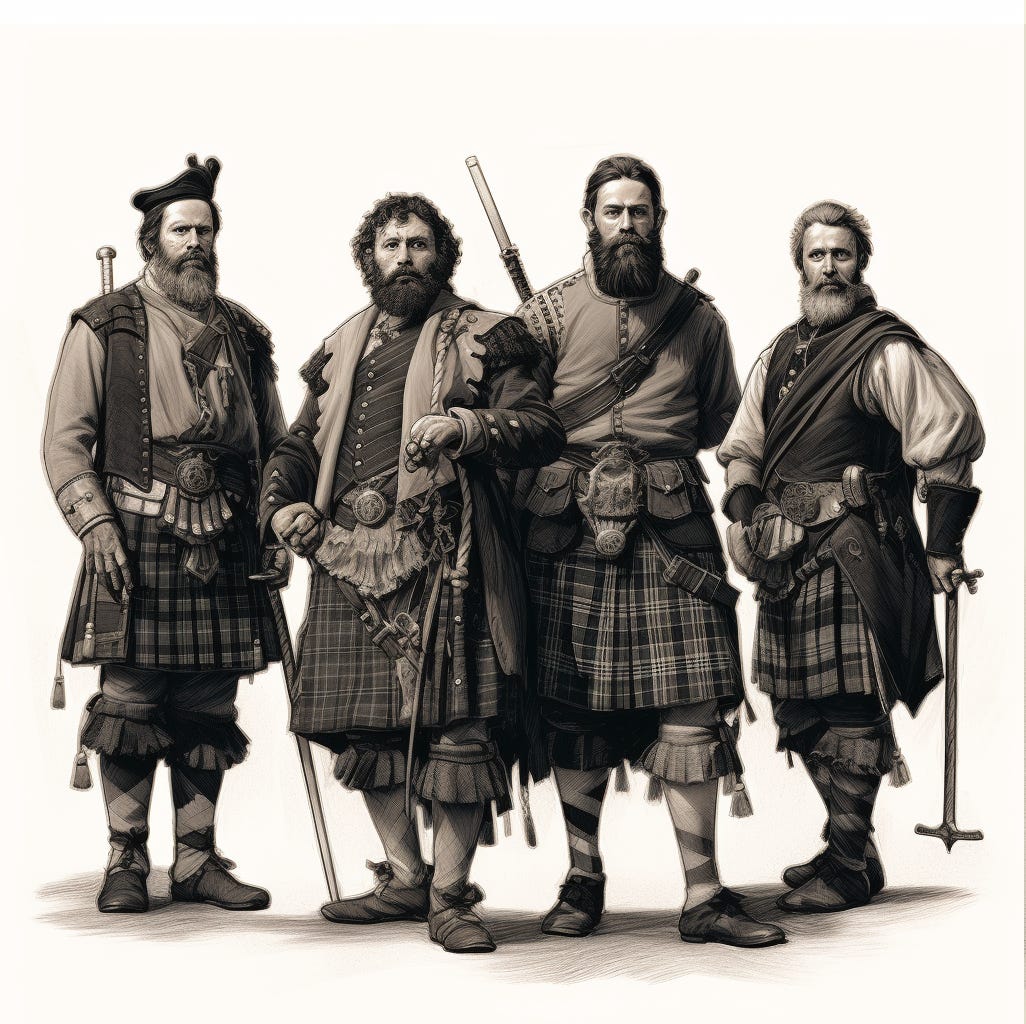The history of the Scottish clans is rife with tales of power struggles and internecine warfare, but the saga of the MacLeod family's fight over the Isle of Lewis stands out for its complexity and dramatic turns.
The Patriarch's Legacy and the Seeds of Discord
The tale begins with Rory Macleod of Lewis, a clan leader with a complicated family tree. His first marriage to Barbara Stewart produced Torquil Oighre, a son who sadly died before his father, leaving no direct heir. Rory's subsequent marriages bore him more sons, each with their own claims to his legacy. This familial structure, typical of the time's dynastic politics, sowed the seeds of future discord, as each son eyed the prized possession of the Isle of Lewis.
The Rise and Fall of Torquil Dow
The death of old Rory set off a chain reaction of events. His son, Torquil Dow, seized the Isle of Lewis, discounting his half-brother Torquil Connaldagh, who was often considered illegitimate. Torquil Dow's rule, however, was marked by tension and short-lived. In a dramatic and brutal twist, the Brieve of Lewis, under the guise of a friendly banquet aboard a Dutch ship, captured and ultimately executed Torquil Dow and his closest allies. This act of treachery in 1597 changed the balance of power on the island overnight.
Torquil Connaldagh's Plight
Torquil Connaldagh, once sidelined in the struggle, turned to the Clan Mackenzie, his mother's kin, for support. His bid for power was obstructed by Neil Macleod, another of Rory's sons, who had different plans for the island. Neil's intervention was significant, as he controlled the island, acknowledging the children of Torquil Dow as the rightful heirs, thus maintaining the lineage of his father's favored lineage.
The Fife Adventurers: A New Threat
As if the internal struggles weren't enough, the Isle of Lewis attracted external interest too. In 1599, a group from Fife, motivated by the island's reported fertility and potential, secured a royal grant to colonize Lewis. Their arrival marked a new chapter in the island's tumultuous history, as they faced fierce resistance from Neil Macleod and Murdo, another of Rory's sons, demonstrating the locals' reluctance to submit to external rule.
Murdo's Betrayal and Neil's Struggle
In an unexpected turn, Neil captured his own brother Murdo for collaborating with the Brieve, the man responsible for their brother Torquil Dow's death. This capture and subsequent negotiations with the Fife adventurers added yet another layer to the already complex political situation on the island.
The King's Intervention and the Final Outcome
The conflict reached its zenith when the Scottish King intervened, reshaping the island's political landscape. The Lord of Kintail, initially an ally to the Fife group, eventually maneuvered himself into a position of power, securing control over the Isle of Lewis. Neil Macleod's last stand on the rock fortress of Berrissay and his eventual execution in 1613 marked a tragic end to this familial conflict.
Reflections on a Clan's Legacy
The story of the MacLeod family and their struggle for the Isle of Lewis is more than a chapter in Scottish history; it's a testament to the era's turbulent clan dynamics. It encapsulates the era's characteristics – strategic marriages for alliances, shifting loyalties, and relentless pursuits of power – and remains a poignant reminder of the complex tapestry that is Scotland's clan history. As we reflect on these events, they not only illuminate the past but also offer insights into the enduring nature of power struggles and family dynamics.





